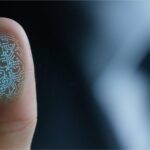
Introduction to Biometric Fingerprint Attendance System
Biometric fingerprint attendance system utilize unique physiological characteristics, such as fingerprints, to accurately identify individuals. Unlike traditional methods, which rely on easily forgeable credentials, biometric systems offer a highly secure method of authentication. By capturing and analyzing fingerprint patterns, these systems provide a robust means of verifying the identity of individuals, thereby enhancing security and eliminating the possibility of buddy punching or unauthorized access.
The Importance of Security in Attendance Management
Effective attendance management is essential for the smooth operation of any organization. From tracking employee work hours to monitoring student attendance in educational institutions, accurate and reliable attendance data forms the foundation for various administrative processes. However, without adequate security measures in place, attendance records are vulnerable to manipulation, leading to inaccuracies and potential financial losses.
Biometric fingerprint attendance system address these security concerns by ensuring that only authorized individuals can access restricted areas or record their attendance. By linking each fingerprint to a unique identity, these systems prevent unauthorized access and deter fraudulent activities, thereby safeguarding the integrity of attendance data.
Enhancing Efficiency and Productivity
In addition to bolstering security, biometric fingerprint attendance system also contribute to enhanced efficiency and productivity within organizations. Traditional attendance tracking methods often involve time-consuming manual processes, such as data entry and verification. Moreover, the risk of human error further complicates the task of managing attendance records.
By automating the attendance tracking process, biometric fingerprint systems streamline operations and reduce administrative burden. Employees or students can quickly clock in and out by scanning their fingerprints, eliminating the need for manual record-keeping. This not only saves time but also ensures the accuracy of attendance data, allowing managers and administrators to make informed decisions based on real-time information.
Addressing Privacy Concerns
While biometric fingerprint attendance system offer numerous benefits, they also raise concerns related to privacy and data security. Organizations implementing these systems must ensure compliance with relevant regulations, such as the General Data Protection Regulation (GDPR) in the European Union or the Health Insurance Portability and Accountability Act (HIPAA) in the United States.
To address privacy concerns, it is essential to adopt transparent policies regarding the collection, storage, and usage of biometric data. Organizations should implement robust security measures to protect sensitive information and obtain explicit consent from individuals before capturing their biometric data. Additionally, regular audits and assessments can help ensure compliance with applicable privacy regulations and mitigate the risk of data breaches.
Visit Story: Loan Management System Workflow
Future Trends and Innovations
As technology continues to evolve, biometric fingerprint attendance system are expected to undergo further advancements and innovations. One such trend is the integration of artificial intelligence (AI) and machine learning algorithms, which can enhance the accuracy and reliability of biometric authentication.
Moreover, the emergence of contactless biometric technologies, such as facial recognition and iris scanning, presents new opportunities for improving user experience and hygiene, especially in light of public health concerns such as the COVID-19 pandemic.
Conclusion
In conclusion, biometric fingerprint attendance system play a pivotal role in securing the success of organizations by enhancing security, efficiency, and productivity. By leveraging unique physiological characteristics, such as fingerprints, these systems provide a highly secure method of authentication, mitigating the risk of fraud and unauthorized access. Moreover, by automating attendance tracking processes, biometric systems streamline operations and ensure the accuracy of attendance data, enabling organizations to make informed decisions and optimize resource allocation.
While biometric technologies offer significant benefits, it is crucial for organizations to address privacy concerns and comply with relevant regulations to maintain trust and transparency. By staying abreast of technological advancements and implementing best practices in data security and privacy, organizations can harness the full potential of biometric fingerprint attendance system to achieve their goals and secure long-term success.
